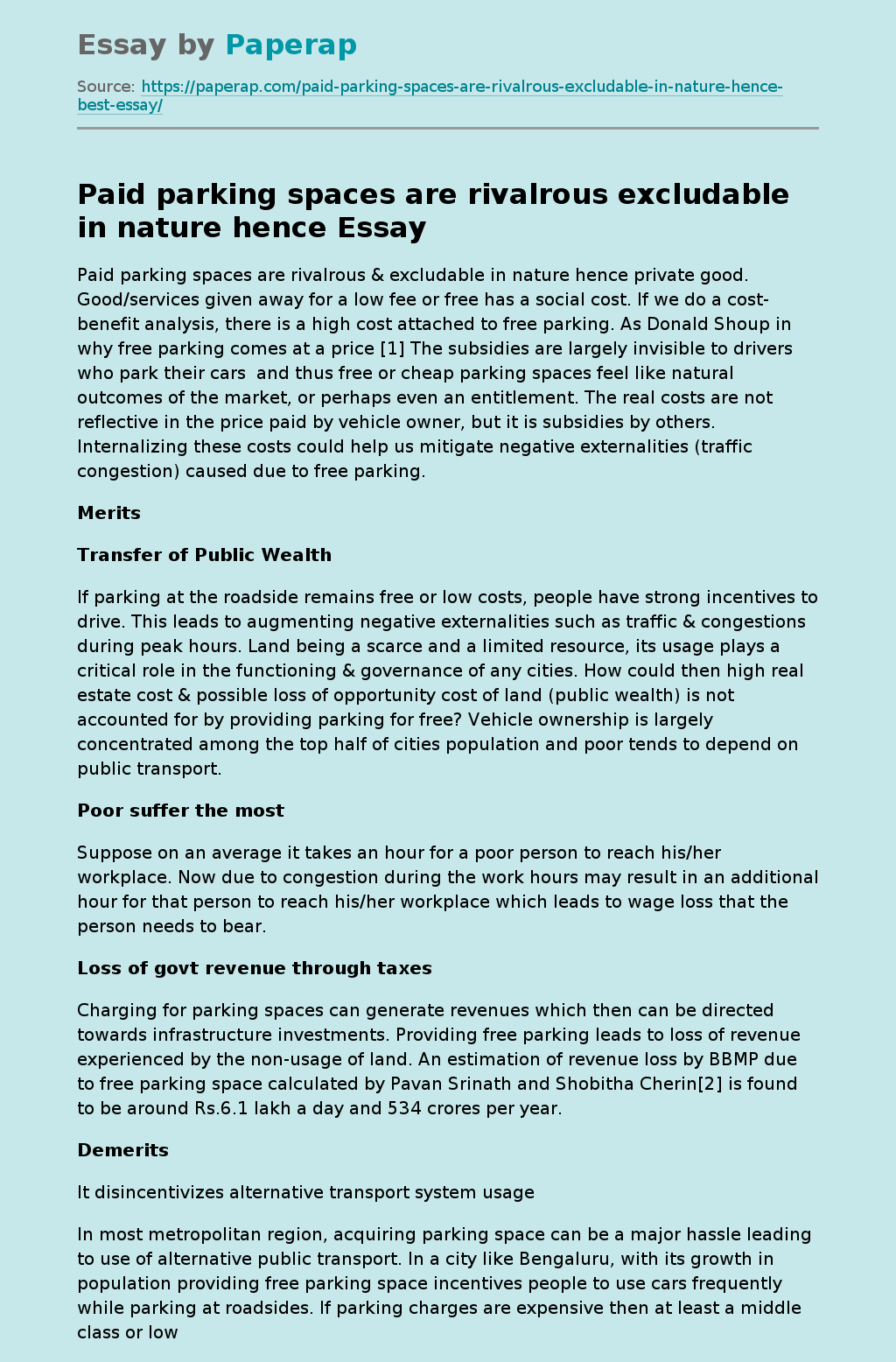Paid Parking Spaces
The following example essay on “Paid Parking Spaces” analyzes the advantages and disadvantages of organizing paid parking spaces. If we do a cost-benefit analysis, there is a high cost attached to free parking.
Paid parking spaces are rivalrous & excludable in nature hence private good. Good/services given away for a low fee or free has a social cost. As Donald Shoup in why free parking comes at a price. The subsidies are largely invisible to drivers who park their cars and thus free or cheap parking spaces feel like natural outcomes of the market, or perhaps even an entitlement.
The real costs are not reflective in the price paid by vehicle owner, but it is subsidies by others. Internalizing these costs could help us mitigate negative externalities (traffic congestion) caused due to free parking.
Merits
Transfer of Public Wealth
If parking at the roadside remains free or low costs, people have strong incentives to drive. This leads to augmenting negative externalities such as traffic & congestions during peak hours.
Land being a scarce and a limited resource, its usage plays a critical role in the functioning & governance of any cities. How could then high real estate cost & possible loss of opportunity cost of land (public wealth) is not accounted for by providing parking for free? Vehicle ownership is largely concentrated among the top half of cities population and poor tends to depend on public transport.
Poor suffer the most
Suppose on an average it takes an hour for a poor person to reach his/her workplace.
Now due to congestion during the work hours may result in an additional hour for that person to reach his/her workplace which leads to wage loss that the person needs to bear.
Loss of govt revenue through taxes
Charging for parking spaces can generate revenues which then can be directed towards infrastructure investments. Providing free parking leads to loss of revenue experienced by the non-usage of land. An estimation of revenue loss by BBMP due to free parking space calculated by Pavan Srinath and Shobitha Cherin[2] is found to be around Rs.6.1 lakh a day and 534 crores per year.
Demerits
It disincentivizes alternative transport system usage. In most metropolitan region, acquiring parking space can be a major hassle leading to use of alternative public transport. In a city like Bengaluru, with its growth in population providing free parking space incentives people to use cars frequently while parking at roadsides. If parking charges are expensive then at least a middle class or lower middle class will be willing to use alternative modes of transport.
As a solution to the parking problem, Bengaluru municipality built paid parking spaces, but the private vehicle could park for free on the sides of the roads. Instead of building parking lots themselves they should have formed a policy which disincentivized people from parking on roadsides. After this, private players could focus on building the parking spaces, while government focus on regulating it so that did not become a monopoly but a competitive market that citizens are not exploited with the higher parking fee.
Paid Parking Spaces. (2019, Dec 15). Retrieved from https://paperap.com/paid-parking-spaces-are-rivalrous-excludable-in-nature-hence-best-essay/

